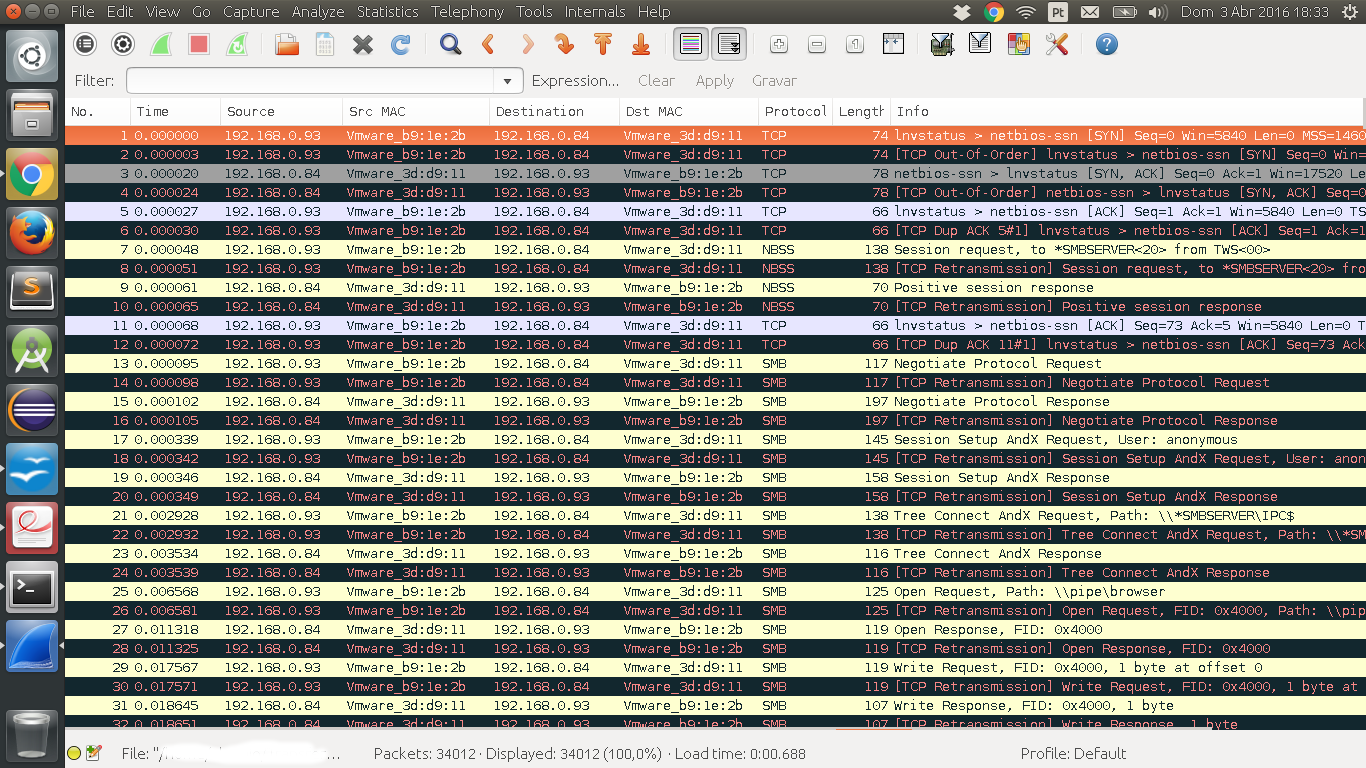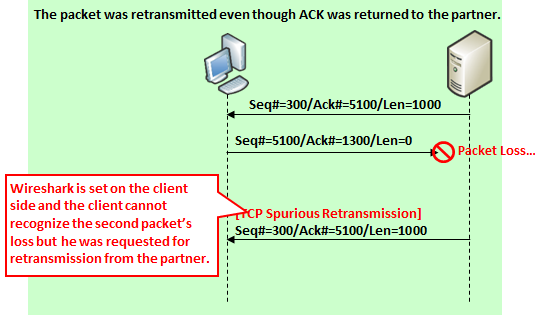
(If you want truly the bandwidth then you may need double the bandwidth)

Latency/RTT(Round Trip Time) = 250ms BandWidth = 45Mbps (single cable without any devices in between the sender and receiver)īandwidth Delay Product = 45Mbits/sec * 0.250 second = 11.25 Mbits = 1.40625 MBytes Statistics -> TCP Stream Graph -> Time/Sequence (Stevens)
Tcp retransmission wireshark windows#
Windows Scaling: Statistics -> TCP Stream Graph -> Window Scaling Graph Selective acknowledgements will use the ACK number in the TCP header to indicate which packet was lost.Ī. If one of these packets in the stream goes missing, the receiving socket can indicate which packet was lost using selective acknowledgments. If it does not receive an acknowledgment before the timer expires, the sender will assume the segment has been lost and will retransmit it.ģ) DUP ACKs (Triple Duplicate) and Fast retransmissions: once the sender receives three duplicate acknowledgments, it will immediately retransmit the missing packet instead of waiting for a timer to expire. Rather than sending one segment of data at a time and waiting for an acknowledgement, transmitting stations will send several packets in succession.Ģ) TCP Retransmission: After sending a packet of data, the sender will start a retransmission timer of variable length. Slow start, congestion avoidance, fast retransmit, and fast recoveryġ) Sending TCP sockets usually transmit data in a series. TCP: Len: 1448 (not 1460) because there are TCP Options: 12 bytesġ460(payload) + 14 (Ethernet Header) + 20 (IPv4 header) + 20 (TCP header) = 1514 total


MSS(Maximum Segment Size): this is maximum number of bytes that we can put in any one TCP packet Win(TCP window size): receive buffer size


 0 kommentar(er)
0 kommentar(er)
